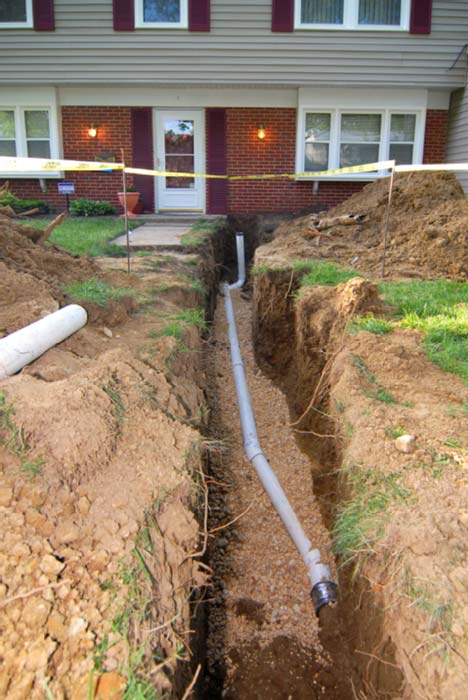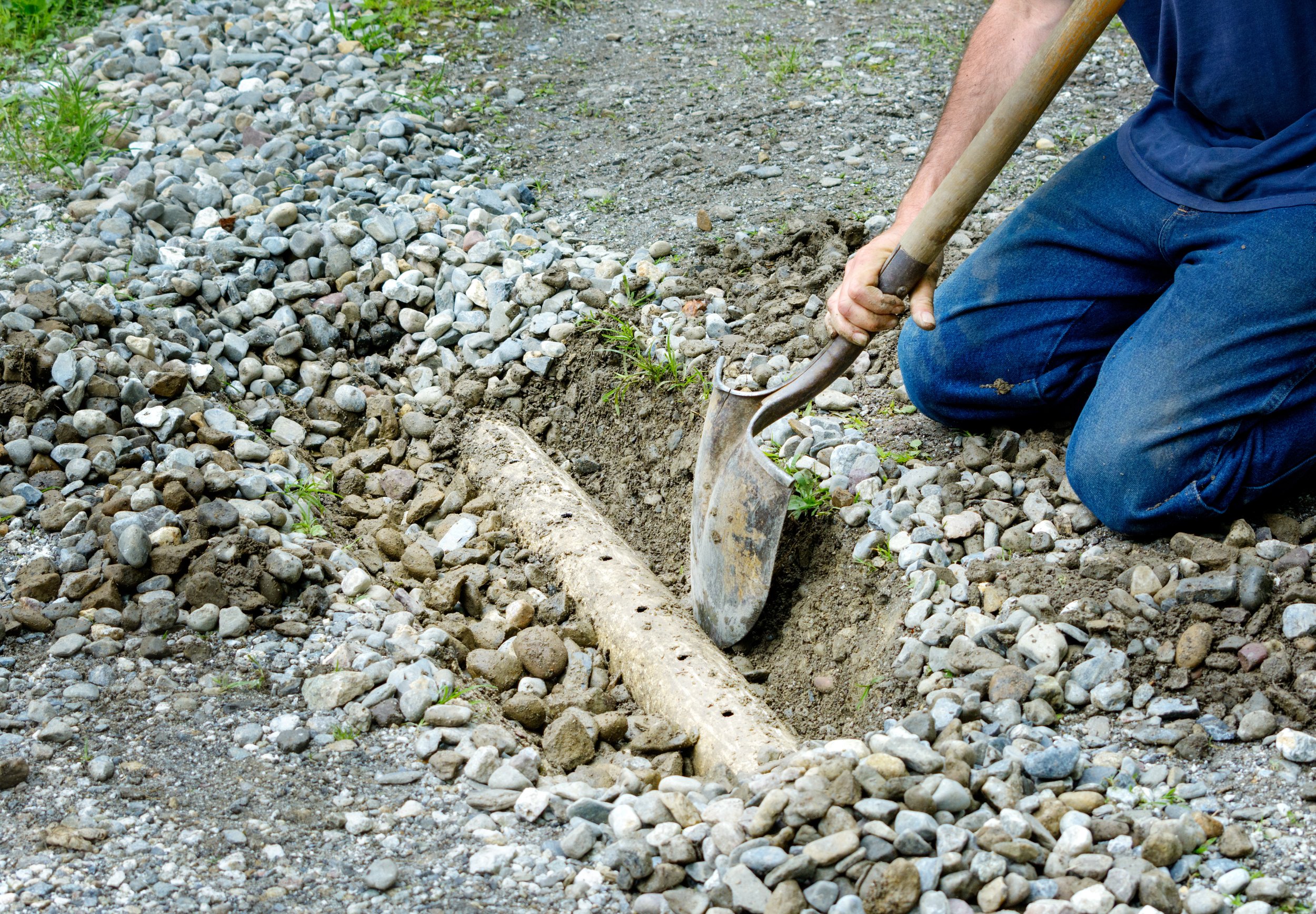Recognizing the Significance of a Septic Storage Tank French Drain for Effective Wastewater Administration
The integration of a septic tank French drainpipe system plays a pivotal duty in reliable wastewater management, yet its significance is commonly neglected. This system not just helps with the treatment of sewer however additionally successfully handles excess water, minimizing possible environmental dangers. Comprehending the technicians and benefits of such a system can brighten its crucial role in protecting against dirt saturation and improving groundwater quality. Nevertheless, ignoring its maintenance can bring about severe complications that may threaten these benefits. What are the particular obstacles one might encounter without this essential part?
What Is a Septic System French Drainpipe?
A sewage-disposal tank French drain is a specialized drain system created to handle wastewater and protect against flooding in areas where traditional drain approaches may be poor. This system incorporates the performances of a traditional septic tank with a French drain, enabling effective wastewater treatment and effective water diversion.

Constructed utilizing perforated pipes stocked gravel trenches, a French drainpipe promotes the activity of water away from critical locations. It permits for the seepage of excess water right into the bordering dirt, advertising reliable drain while shielding the septic tank's integrity. The mix of these 2 systems is particularly beneficial in areas with hefty rainfall or poor drainage, making sure the durability and functionality of wastewater monitoring systems while guarding public wellness and the setting.

Just How It Works in Wastewater Management
In wastewater monitoring, the assimilation of a septic container and French drain plays a critical role in making certain reliable treatment and disposal of sewer. The sewage-disposal tank acts as the first line of protection, where wastewater goes through first treatment via sedimentation and anaerobic food digestion. Solids resolve at the bottom, creating sludge, while lighter materials, such as oil and oils, float to the top, producing a scum layer. This procedure lowers the natural lots of the wastewater prior to it moves forward.
When the wastewater is cleared up, it moves right into the French drainpipe system, which is developed to help with additional therapy and secure dispersal. The French drain contains perforated pipelines buried in gravel or stone, permitting cured effluent to percolate into the bordering dirt. This natural purification process help in the removal of pathogens and nutrients, promoting groundwater recharge and lowering the danger of surface contamination.
With each other, the septic tank and French drainpipe create a lasting approach to wastewater monitoring, decreasing ecological effect while ensuring conformity with health laws. This integrated system not just protects public health and wellness but likewise keeps the integrity of neighborhood communities.
Advantages of a French Drain System

The French drain system offers countless benefits that boost both wastewater monitoring and environmental management. Mostly, it successfully redirects water far from vital locations, minimizing the risk of flooding and dirt saturation that can jeopardize septic tanks. This positive drainage option helps preserve the stability of the septic system by protecting against excess wetness, which can lead to system failing.
In addition, an appropriately mounted French drain decreases the potential for groundwater contamination. By funneling wastewater away from the building, it decreases the probability of pollutants going into regional water resources, hence protecting public wellness and maintaining ecological equilibrium. The system also boosts the visual appeals and functionality of outside rooms by avoiding water build-up, which can produce undesirable puddles or muddy areas.
Additionally, French drains pipes call for fairly reduced upkeep contrasted to various other water drainage solutions, making them an affordable long-lasting investment. Their adaptability enables them to be utilized in different landscapes, fitting both industrial and property properties. Ultimately, the advantages of a French drainpipe system prolong beyond instant drainage needs, adding to lasting wastewater administration methods and promoting environmental stewardship.
Usual Concerns Without a French Drain
Overlooking the installation of a French drain can bring about substantial difficulties in handling water flow and maintaining dirt stability. One of the key problems is the build-up his response of excess surface water, which can develop swamping or merging in backyards, especially after heavy rains. This torpidity can saturate the dirt, bring about erosion and compromising the structure of close-by structures.
In addition, without a French drain, groundwater can improperly penetrate septic systems, increasing the threat of system failure. The resulting back-up can cause unpleasant smells, health and wellness hazards, and pricey repair services. Poor drainage can additionally promote the development of mold and mold, which can negatively influence indoor air high quality and position wellness dangers to owners.
Eventually, the absence of a French drainpipe can result in an array of ecological and architectural concerns that demand considerable treatment and expense to correct. Applying a French drainpipe system is important for efficient wastewater administration and residential property defense.
Maintenance Tips for Homeowners
Regular upkeep of a French drainpipe is important to ensure its optimum efficiency and long life. Homeowners must regularly evaluate the drainpipe for any kind of indicators of clog or damages. This consists of checking for debris build-up, which can impede water flow. If debris exists, consider using a high-pressure water jet to clear the drainpipe.
Furthermore, it is essential to maintain the location around the French drainpipe devoid of particles, such as fallen leaves, dirt, and various other raw material. This will certainly avoid blocking and enable effective water drain. On a regular basis trimming plants and planting away from the drainpipe can likewise minimize root breach.
In addition, home owners ought to keep track of the efficiency of their French drainpipe after hefty rains. Observing how well water is directed far from the septic system can give insights into its performance. It may suggest a demand for professional assessment. if merging water is kept in mind.
Finally, take into consideration organizing routine specialist evaluations to examine the general condition of the drainpipe. Such aggressive actions will help keep the effectiveness of your French drain and guarantee effective wastewater administration for many years to come.
Final Thought
In conclusion, the septic storage tank French drain system plays an important role in effective wastewater management by guaranteeing proper treatment of sewage and reliable water diversion. On the whole, the septic container French drainpipe represents a sustainable solution that profits both property and industrial homes across various over here landscapes.
The assimilation of a septic storage tank French drain system plays a crucial duty in efficient wastewater management, yet its value is often overlooked. Eventually, the benefits of a French drainpipe system extend beyond prompt drain needs, adding to sustainable wastewater administration practices and advertising environmental stewardship.
Additionally, without a French drainpipe, groundwater can improperly penetrate septic systems, enhancing the danger of system failing - French Drain System. Executing a French drainpipe system is important for reliable wastewater monitoring and property security
In verdict, the septic tank French drain system plays an essential function in reliable wastewater management by making sure appropriate treatment of sewer and effective water web diversion.